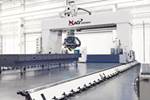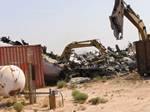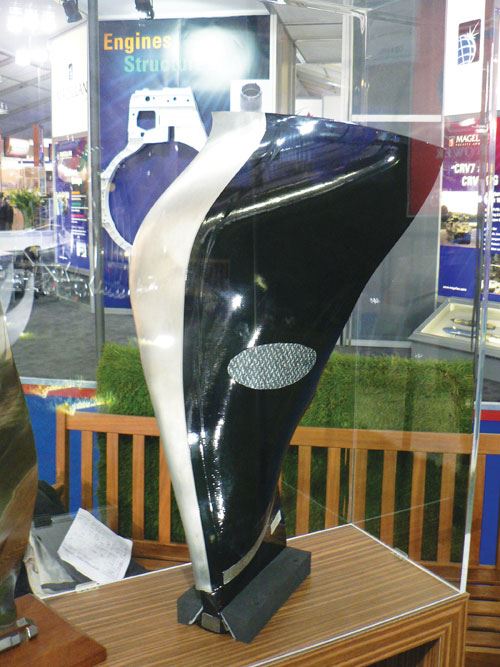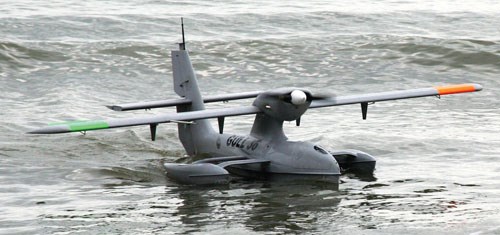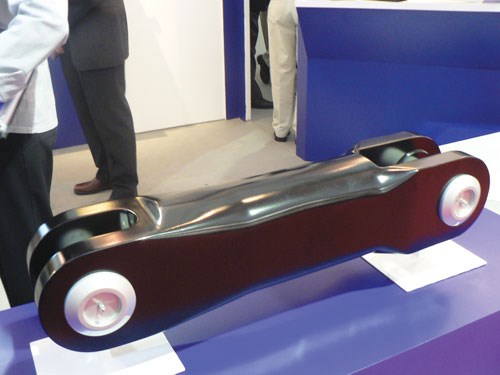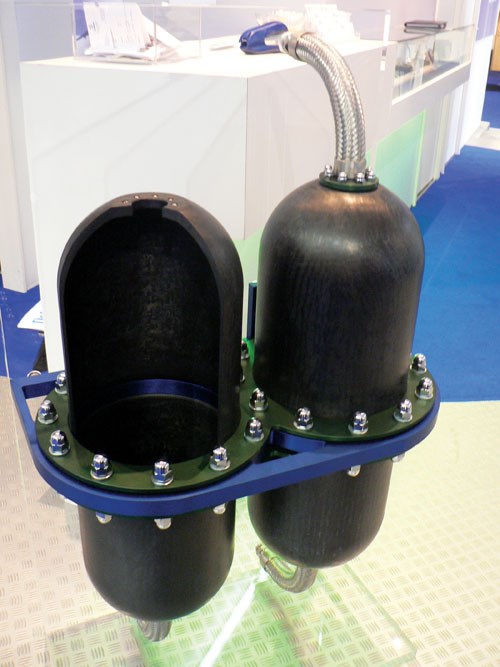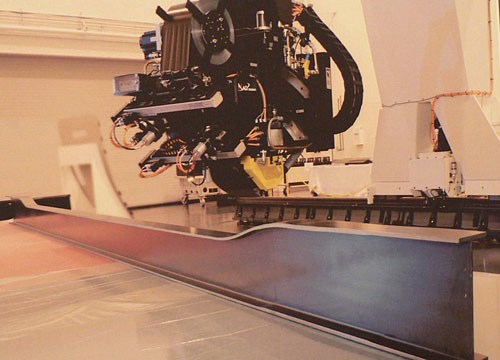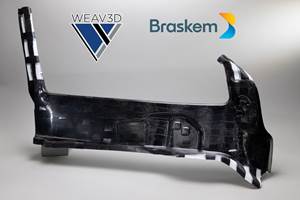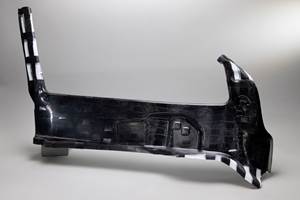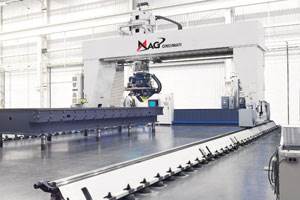2008 Farnborough Airshow Report
This biennial aerospace showcase underscores the ascendancy of composites in airframes and jet engines.
The Farnborough International Airshow was held July 14-20 in Farnborough, Hampshire, U.K. Despite all the gloom and doom in many economic segments, the aerospace industry and, in particular, the composites sector of that industry, appears to be doing well. Commercial aircraft manufacturers The Boeing Co. (Chicago, Ill.) and Airbus SaS (Toulouse, France) continue to receive more orders than they deliver. Although both have had some cancellations, these have been replaced by new orders, and both companies have taken advantage of being able to offer key customers some early slots that were not available six months ago.
Next-gen jet engines: composites reduce fuel burn
The most notable events at Farnborough were the announcements of forthcoming changes in engine technology, including innovations planned for the next generation of smaller engines targeted at single-aisle commercial aircraft (see "Aviation Outlook," in "Learn More," at left). CFM International, a joint venture between GE Aviation (Evendale, Ohio) and Snecma (Courcouronnes, France), announced a new generation of LEAP-X engines that provide a 16 percent reduction in fuel burn compared with CFM's current engine. CFM is planning to use composites in the fan blade — a first for a small jet engine. Pratt and Whitney (Hartford, Conn.) launched a competing engine, the Purepower GTF, with a geared drive to the fan blades, although company representatives were unwilling to talk about what materials would be used in the fan blades, fan casings or gearbox casings. And Rolls-Royce (Derby, U.K.) announced a joint venture with GKN Aerospace (East Cowes, Isle of Wight, U.K) to study fan blades made from alternative materials.Clearly, the revolution in the use of composite structures in airframes will be followed by even more demanding applications in aero engines. Scott Carson, Boeing's CEO, said he believes that the recently announced 14 percent performance improvement in forthcoming engines will enable Boeing to have a new single-aisle aircraft available to airlines by 2017 or 2018. Airbus, by contrast, was sticking to a 2020 target date.
Having pre-empted its bigger rivals in the regional/business jet segment by launching its new C-Series single-aisle aircraft, which will compete directly with the smaller aircraft in the B737 and A320 range, Bombardier (Montreal, Quebec, Canada) detailed the extensive use of composites in the new plane's structure. Of particular interest was the breakdown of metal and composite materials that will be used on the C-Series. In total, 47 percent the structure, by weight, will be composites. Benjamin Boehm, program manager of New Commercial Aircraft at Bombardier, reported that the major areas of application of carbon fiber-reinforced polymer (CFRP) will be the rear fuselage (91 percent) and the wings (66 percent). The main fuselage will be made from an aluminium-lithium alloy, with composites used only in the under floor structure and in window surrounds (34 percent of fuselage weight). Bombardier has been one of the leading users of resin transfer molding (RTM) and resin film infusion (RFI) on its smaller aircraft. The company plans to use the same technology for the wingbox on the C-Series. Work has already begun on a three-quarter-size demonstrator, representing the inboard section of the C-Series wing.
Manufacturers adjust to mounting production forecasts
Farnborough was the stage for many announcements of changes, including acquisitions and the formation of joint ventures in the composites industry to facilitate production capacity increases. For example, in the United Arab Emirates, home of the biggest customers for both Boeing and Airbus, Airbus parent EADS (Schiphol Rijk, The Netherlands) announced the creation of a joint venture composites facility with Mubadala Aerospace in Abu Dhabi, which will start operating in 2010. Initially, the plant will build spoilers and flap track fairings. Dubai officials are planning an Aviation City to attract the aerospace industry and have targeted composites as a high-value technology.A couple of years ago, HITCO Carbon Composites (Gardena, Calif.) set out to be the best-in-class Tier 2 aerospace supplier in the world, under the slogan "Automate or Emigrate" (see "Learn More"). HITCO is still in California and close to achieving its objectives with a large investment in composites automation. The company has one automated tape layer (ATL) installed and running and will have a Viper 6000 automated fiber placement machine, supplied by MAG Cincinnati (Hebron, Ky.), operational in February 2009, with a second ATL up by April 2009. Additionally, a new autoclave and a 5-axis waterjet cutter are in various stages of progress. The industry has rewarded HITCO's initiative with new Boeing 787 part orders from Alenia (fixed trailing edge and fuselage parts) and floor beams from Spirit AeroSystems (Wichita, Kan.) and Kawasaki Heavy Industries (Nagoya, Japan).
GKN Aerospace, meanwhile, reported on its developing relationships with its suppliers. The long-expected deal with Airbus, under which GKN will take over the manufacturing portion of the Airbus complex at Filton, U.K., was yet to be concluded, but GKN touted its agreement with Rolls-Royce to form a £11 million ($21 million USD) joint venture to do composite fan blade R&D. Frank Bamford, GKN's VP of marketing, indicated that the company sees many of the components in the front end of turbofan engines as ideal for composites, including fan blades and fan casings. GKN had a CFRP blade on display — its contribution to the VITAL project, a European Union (EU) program spearheaded by Rolls-Royce.
Kaman Aerospace (Bloomfield, Conn.) said it had acquired one of Bri-tain's leading composites companies, Brookhouse Holdings (Darwen, U.K.), for £43 million ($85 million USD). This move is expected to give Brookhouse financial clout sufficient to compete with some of its bigger competitors.
Hampson Industries (Dudley, U.K.), until a few years ago a traditional supplier of metal structures, has quietly built a strong position in composites. First, it acquired two U.S.-based parts makers: Composite Horizons Inc. (CHI, Covina, Calif.) and Texstars (Grand Prairie, Texas). CHI's expertise is in the molding of high-temperature polymer composites. The company has been awarded substantial business on the F-35 Lightning II. Hampson also has acquired three toolmakers that will continue to operate under their own names: Coast Composites (Irvine, Calif.), Odyssey Industries (Lake Orion, Mich.) and Global Tooling Systems (Utica, Mich.). The Hampson group is now believed to be the world's biggest supplier of tooling for composite structures.
Parts suppliers spotlight innovative composite parts
Unmanned aerial vehicle (UAV) builders are universally using composites to save weight and thereby increase each aircraft's "time on station." One company, Warrior Aero-Marine (Salisbury, U.K.), has come up with an original way of substantially increasing time on station: The company's small, remotely piloted composite seaplane can land on water to conserve fuel and then take off and resume surveillance when needed. Cobham's Flight Refuelling Ltd. (Wimborne, Dorset, U.K.) has contracted with Warrior to supply a Gull 36 UAS (unmanned aerial system) as part of Cobham's contribution to ASTRAEA, a £32 million ($60 million USD) program begun by a consortium of aerospace companies that focuses on the technological and regulatory issues involved in opening nonsegregated airspace to unmanned autonomous aircraft.Albany Engineered Composites (Rochester, N.H.) had two different composite jet engine fan blades on display, both made from 3-D woven preforms. One was a large blade, of wide-bodied aircraft engine size, from a Snecma R&D program. (This blade was virtually identical to an unlabeled blade that was on display in the CFM stand.) The other, an Albany/Snecma blade, was the LEAP-X previously mentioned, recently designed and patented by Snecma, featuring reinforcements woven by Albany and injected by CFAN (San Marcos, Texas).
Also of great interest was a 787 landing gear brace made for Messier Dowty (Cheltenham, U.K.). Its preform was made by Albany from conventional fabrics transversely reinforced with fibers inserted by a process called "T" forming. This involved inserting a hypodermic needle into the dry preform and had the benefit that the fibers could be placed at an angle if required.
In addition to the above-mentioned parts — all made with thermoset composites — there also were a number of components on exhibit that were made from thermoplastic composites. Green Tweed (Kulpsville, Pa.), a company previously focused on commercial applications, particularly for the oil industry, gave evidence of its successful move into aerospace applications with seven diverse reinforced-thermoplastic parts. All were made from carbon fiber. Some used continuous fiber, others used short fiber to improve formability, and each featured a matrix selected to suit its application. A nacelle structural component, a filter housing and a landing gear spacer tube were made with a polyetheretherketone (PEEK) matrix. Other components were made using polyphenylene sulfide (PPS) or polyetherimide (PEI). All were compression molded with a typical fiber volume fraction of 60 percent.
Tods (Crewekerne, Somerset, U.K.) showed a carbon/PPS heat shield for the Airbus A400M military cargo plane. The company supplied 57 parts made from just three pressings.
Cobham Composites (Shepshed, Leicestershire, U.K.) had a whole range of antennae and radomes made from thermoset and thermoplastic materials (epoxy, cyanate ester, PEI and PEEK) variously reinforced with quartz or D-glass.
Brookhouse had a very intriguing composite application: wing fuel tank access covers for the lower skin of the A400M wing. These panels, which actually come in two parts, inner and outer, are made from CFRP so that there is not a differential expansion issue with the carbon wingskins. The design requirements were tough — the parts must permit no leakage even after a severe impact test.
Hexcel (Dublin, Calif and Duxford, Cambs, U.K.) celebrated 60 years as a composite materials supplier with the announcement that it had won a $4.5 billion contract to supply the prepreg that will be used to manufacture structures for the Airbus A350 XWB through 2025. On display was a trailing edge panel, showcasing Hexcel's recently developed out-of-autoclave prepreg, HexPly M56, which is designed for oven cure at 180°C/356°F. Reportedly, the material was developed for ease of use with automated tape layers.
Finally, Boeing gave a very interesting presentation on the recycling of scrapped composite parts and off-cuts of uncured material. Two partners were represented in the presentation: Milled Carbon Ltd. (Birmingham, U.K.) and Karborek (Puglia, Italy). The former has been operating for some time, but the latter is a new venture supported by Boeing, Milled Carbon, Boeing partner Alenia Aeronautica (Rome, Italy) and an Italian Technology Institute, ENEA. Karborek plans to process 1,000 metric tonnes per year (approximately 2.2 million lb per year) of material by 2009. John Davidson of Milled Carbon says the potential size of the business is 9 metric tonnes (19,842 lb) per day (see "Learn More").
And for the benefit of those who wonder how well composite fuselages will perform in service, there was some encouraging news in a presentation on the V-22 Osprey tiltrotor. A representative of the U.S. Marine Expeditionary Force gave a report on the first V-22 deployment in Iraq. Given that the fuselage is much thinner than on a civil aircraft and must operate in conditions worse than those in commercial airline operations, the structure stood up well to its use, except when one was hit by a forklift truck. Even then, the damage reportedly was repaired quickly and the aircraft returned to service.
Related Content
Braskem demonstrates PP solutions using Weav3D composite lattice technology
Partnership combines Braskem’s polypropylene sheets with Weav3D Rebar for Plastics technology to address new structural, automotive applications requiring high-strength, lightweight material solutions.
Read MorePEEK vs. PEKK vs. PAEK and continuous compression molding
Suppliers of thermoplastics and carbon fiber chime in regarding PEEK vs. PEKK, and now PAEK, as well as in-situ consolidation — the supply chain for thermoplastic tape composites continues to evolve.
Read MoreHighly tunable, woven lattice reinforcements target automotive structures
CAMX 2023: Startup Weav3D will be demonstrating its two collaborative automotive demonstrator parts and present two conference papers.
Read MoreComposite resins price change report
CW’s running summary of resin price change announcements from major material suppliers that serve the composites manufacturing industry.
Read MoreRead Next
Automate or emigrate
Automated fiber and tape placement is not just a notion, but a real manufacturing strategy, and one being embraced by HITCO Carbon Composites.
Read MoreCarbon fiber: Life Beyond the Landfill
Reclamation technologies give scrapped aerospace-grade carbon fiber new possibilities and a lower price point in nonstructural/conductive applications.
Read MoreAll-recycled, needle-punched nonwoven CFRP slashes carbon footprint of Formula 2 seat
Dallara and Tenowo collaborate to produce a race-ready Formula 2 seat using recycled carbon fiber, reducing CO2 emissions by 97.5% compared to virgin materials.
Read More
